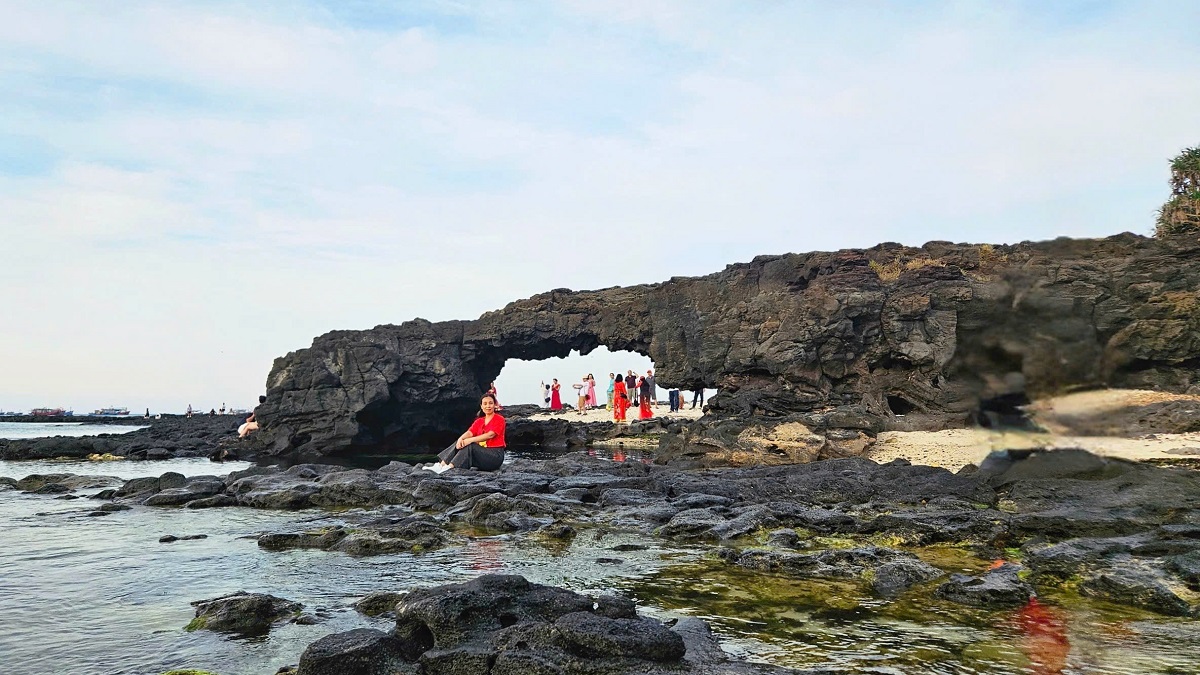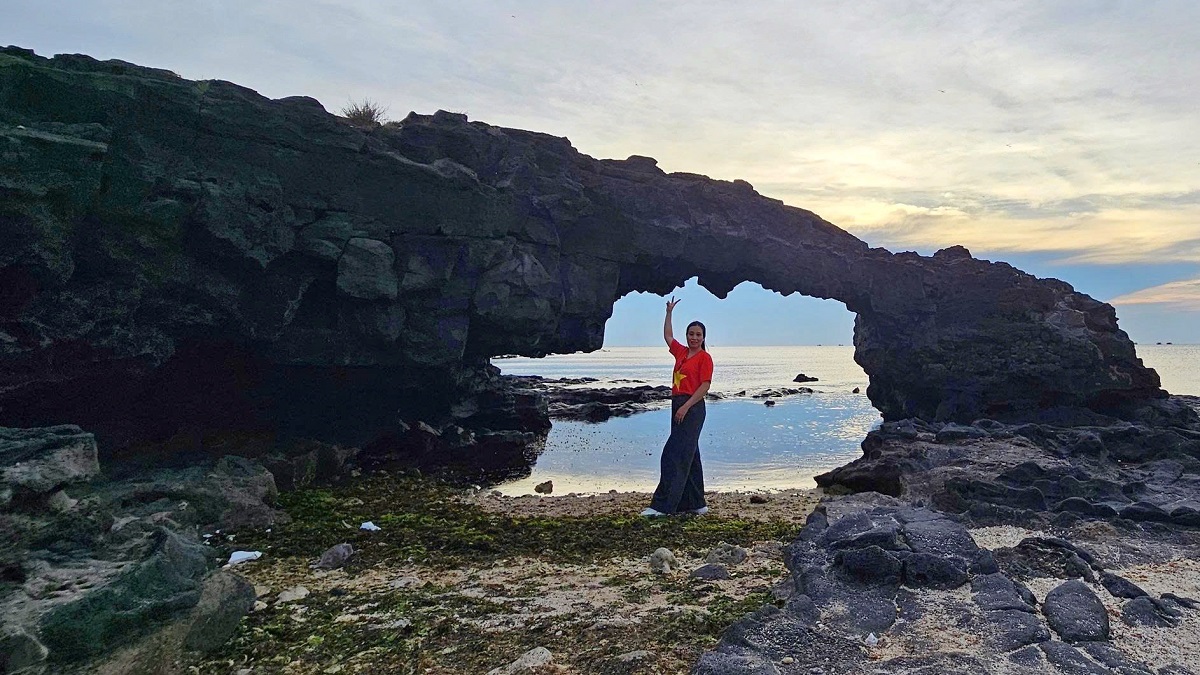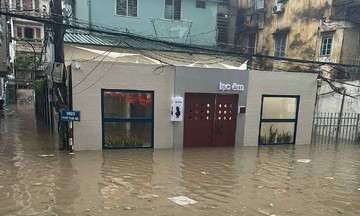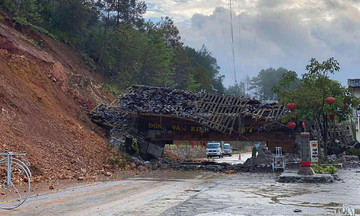On 9/9, the Ministry of Culture, Sports, and Tourism officially designated To Vo Arch in Ly Son, Quang Ngai province, as a national monument.
 |
To Vo Arch on Ly Son Island attracts many tourists. Photo: Pham Linh |
To Vo Arch on Ly Son Island attracts many tourists. Photo: Pham Linh
Located on the west side of Big Island (one of two islands in the Ly Son district), To Vo Arch has long been a popular check-in spot. When photographed from below, the stone arch appears massive, like a "gateway to heaven". Its allure has even prompted Ly Son authorities to post signs discouraging climbing to prevent damage.
The name "To Vo Arch" comes from the exposed basalt arch's resemblance to a potter wasp nest.
According to official records, the arch is part of a recognized scenic area spanning 26,000 m2. The arch itself covers over 420 m2, including the two ends and the arch.
The formation of To Vo Arch is linked to the formation of Ly Son Island. The island was created by volcanic eruptions during the late Neogene and early Quaternary periods, tens of millions of years ago. Big Island had five ancient volcanic craters, including Gieng Tien Mountain.
 |
The arch is taller than an adult. Photo: Pham Linh |
The arch is taller than an adult. Photo: Pham Linh
Experts believe that the Gieng Tien volcano eruption created a thick basalt layer at the arch's location. Over time, this layer was fractured and eroded by waves associated with the Flandrian transgression around the Middle Holocene (approximately 6,000 years ago). As the sea receded, waves continued to batter the rock, breaking the weaker central section and forming the hollow arch seen today.
The beauty of To Vo Arch is enhanced by the rocky beaches adjacent to the basalt platform. The surrounding area boasts a diverse ecosystem with hundreds of marine species and coral reefs.
As a prominent feature of Ly Son Island—home to the ancient Sa Huynh, Cham, and Vietnamese people—To Vo Arch features in local legends, anecdotes, and poetry.
The Quang Ngai Department of Culture, Sports, and Tourism emphasizes the arch's importance within Ly Son's geological and cultural heritage. They stress the need to protect the arch, platform, and coral reef from natural and human-caused damage. They also propose investment in roads and parking facilities to accommodate tourists.
Ly Son, located about 30 km off the coast of Quang Ngai province, is a strategic island linked to Vietnam's maritime sovereignty. Ly Son has about 50 historical and cultural sites, including six national monuments and two intangible cultural heritages. In recent years, the island has become a popular tourist destination. Quang Ngai aims to develop Ly Son into a national marine tourism center.
Pham Linh












